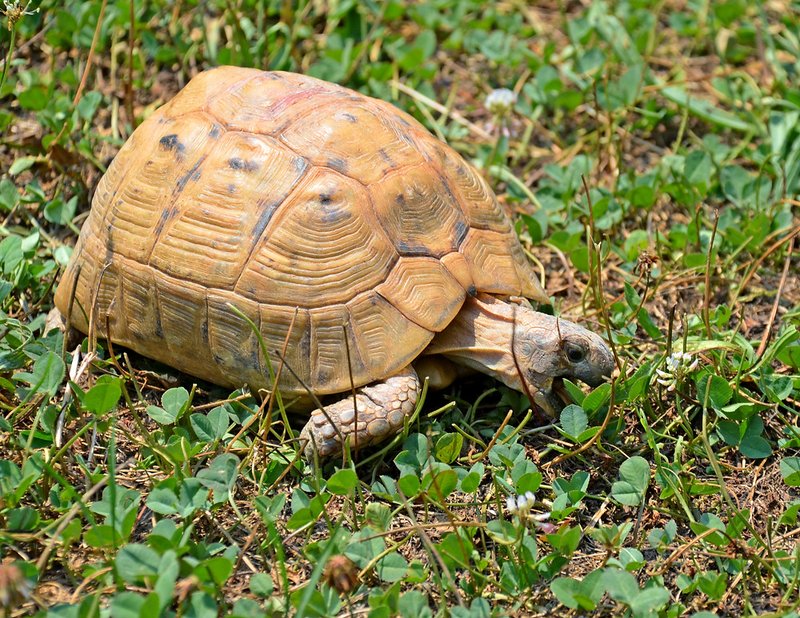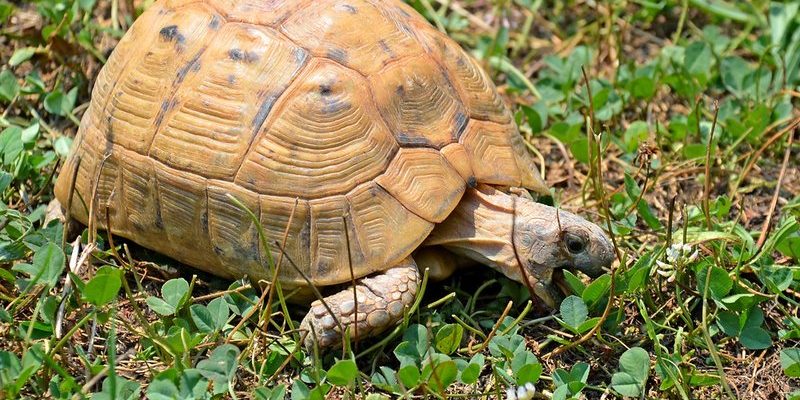
So, what makes a Greek tortoise special? Well, they’re not just any tortoises. They belong to the species Testudo graeca and are known for their beautiful shells and distinct characteristics. In the following sections, I’ll walk you through how to recognize these wonderful reptiles, so you can impress your friends with your newfound knowledge—or maybe even add one to your family!
Physical Characteristics of Greek Tortoises
When you first glance at a Greek tortoise, you might notice its striking appearance. They usually have a high dome-shaped shell with beautiful patterns that can vary from dark brown to yellowish hues. It’s almost like nature decided to create a masterpiece right on their backs! The shell itself typically measures between 6 to 10 inches in length, but larger specimens can reach up to 12 inches.
Another defining feature is their scutes, which are the bony plates on their shells. Each tortoise has a unique pattern, similar to fingerprints for humans. This uniqueness can help you identify individual tortoises if you ever get the chance to observe them in the wild. Don’t forget to check out their legs! Greek tortoises have strong, sturdy legs that help them navigate their rocky habitats.
Differences Between Male and Female Greek Tortoises
If you’re trying to figure out whether you’re looking at a male or female Greek tortoise, you’re in for a treat! There are some notable differences between the two. Males generally have a slightly concave plastron, which is the underside of their shell, allowing them to mate more easily. In contrast, females have a flatter plastron, enabling them to carry eggs more comfortably.
You might also notice that males tend to have longer and thicker tails compared to females. This tail is important for reproduction, as it houses their reproductive organs. While these traits are subtle, they can be fascinating details to observe!
Behavior and Habitat Preferences
Understanding the behavior of Greek tortoises can also help in their identification. These tortoises are known for their terrestrial lifestyle, preferring to roam around rather than climb. They thrive in warm, dry environments commonly found on the Mediterranean islands. You might catch them basking in the sun, which is crucial for their health, as it helps them absorb vitamin D.
In terms of habitat, Greek tortoises enjoy areas with plenty of vegetation, like grasses and herbs, where they can graze. They often seek shelter in rocky crevices or burrows, especially during the hotter times of the day. If you’re lucky enough to see one in its natural setting, pay attention to how it interacts with its environment!
Socialization and Interactions
Greek tortoises are generally solitary creatures. They may not be the most social animals, but they do communicate in their own tortoise way. Males often engage in head-bobbing displays or gentle nudging during mating season. It’s like they have their own form of etiquette!
If you have a pet Greek tortoise, be aware that they may display territorial behaviors, especially if you have multiple tortoises. Observing their interactions can give you insights into their personalities and preferences, making it easier to identify and understand them.
Diet and Eating Habits
Now, let’s talk about what Greek tortoises eat. Their diet mainly consists of leafy greens, herbs, and flowers. They love munching on fresh grasses, dandelions, and even some fruits on occasion. A balanced diet is essential for their health, so it’s crucial to provide them with a variety of food options.
Feeding them is a great way to observe their behavior. Imagine watching a tortoise slowly and deliberately munching away; it’s both meditative and entertaining! Remember to avoid feeding them high-protein foods like lettuce or corn, as these can upset their digestive systems.
Proper Care and Habitat Setup for Pet Greek Tortoises
If you’re thinking about keeping a Greek tortoise as a pet, setting up their habitat correctly is vital. They need a spacious enclosure with plenty of room to roam. A mix of sandy soil and dirt can create a great burrowing environment. Ensure there’s a basking area where they can soak up warmth, as well as shaded spots for cooler resting.
Hydration is crucial, so be sure to provide a shallow dish of water for them to drink and soak in. Keeping their habitat clean and providing them with a well-balanced diet will help your tortoise thrive, allowing you to enjoy their slow, steady company for years to come.
Common Health Problems and Signs to Watch For
Taking care of a Greek tortoise means being aware of their health. Like any pet, they can suffer from various ailments. Some common problems include respiratory infections, shell rot, and vitamin deficiencies. You might notice signs of illness, such as lethargy, lack of appetite, or abnormal breathing patterns.
If your tortoise seems unwell, it’s important to consult a veterinarian who specializes in reptiles. By keeping a close eye on their behavior and health, you can ensure they lead a happy and fulfilling life.
Regular Check-Ups and Maintenance
Regular check-ups are essential for keeping your Greek tortoise healthy. Just like you have your annual doctor visits, tortoises benefit from routine vet check-ups. This helps catch any health issues early on. You should also monitor their diet, habitat, and overall condition regularly, making adjustments as necessary.
Taking these preventive measures can help you spot any health concerns before they become bigger problems. Plus, it allows you to enjoy that amazing bond you’re building with your tortoise!
Identifying a Greek tortoise is more than just recognizing its physical traits; it’s about understanding their behaviors and needs. By learning to identify these unique creatures, you can appreciate their role in our ecosystem—whether you’re observing them in the wild or caring for one at home.
So next time you see a little tortoise wandering about, you might just be able to point it out as a Greek tortoise, impressing your friends with your knowledge. Remember, these enchanting animals are not just adorable; they’re a crucial part of our planet’s biodiversity. Enjoy your journey into the wonderful world of Greek tortoises!

